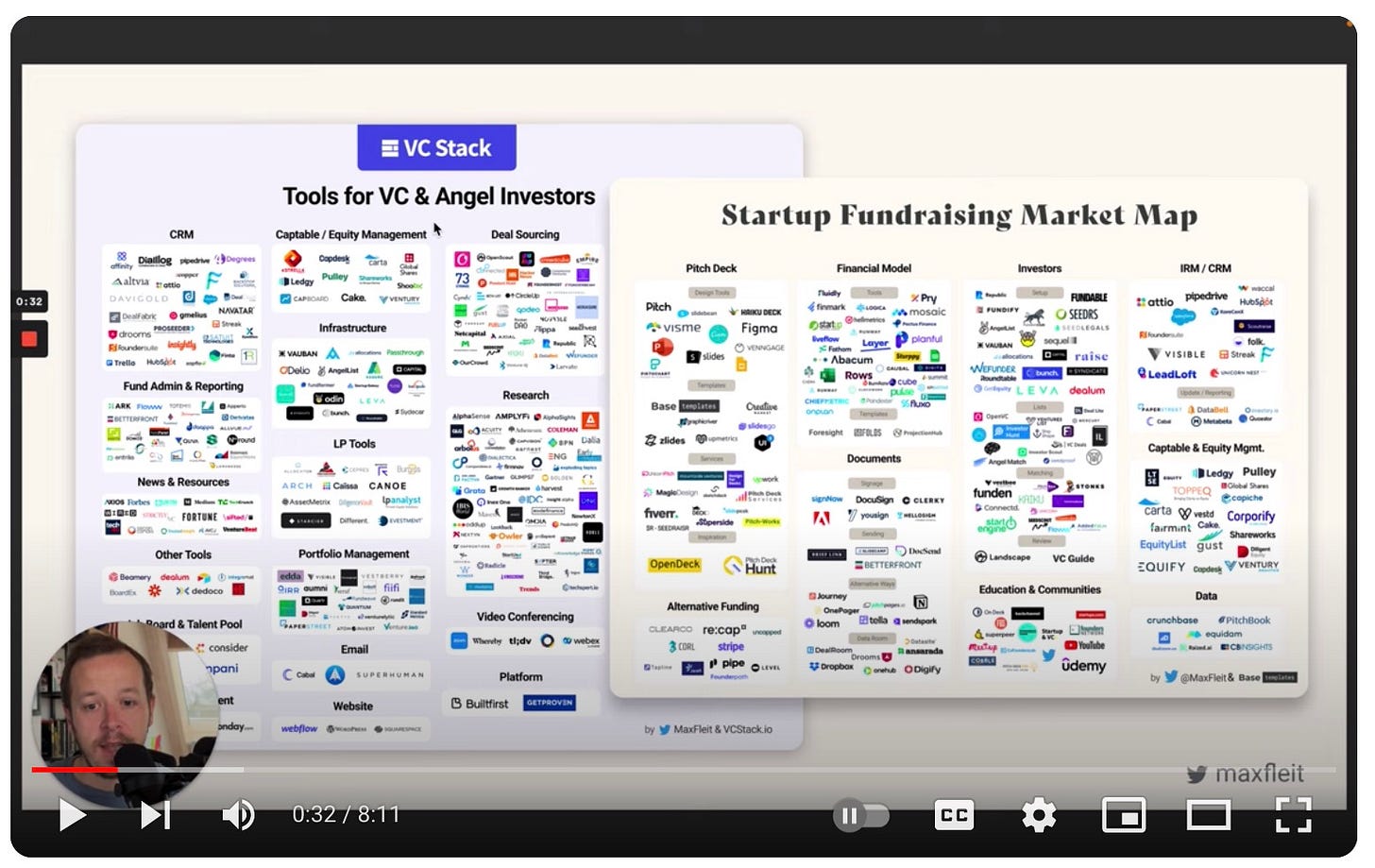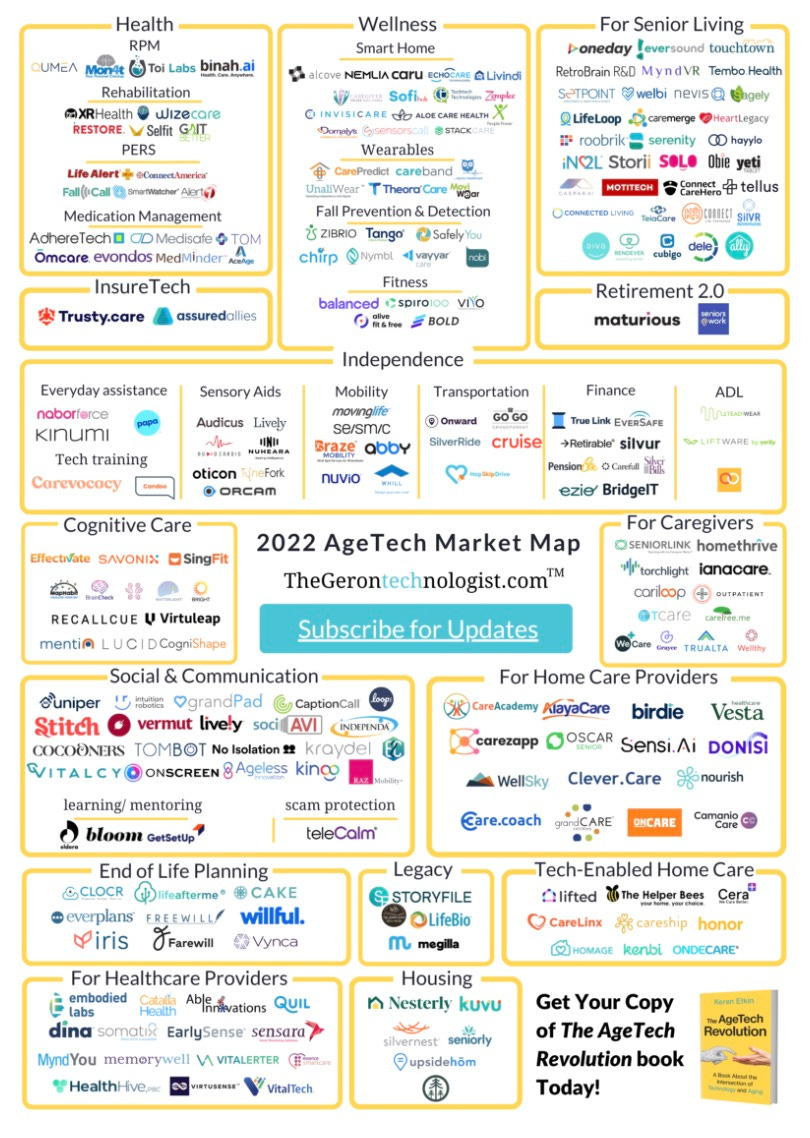🚩 Map the Territory - TRUST-able #25 - Oct/Nov 2023
Gaining trust by mapping valuable resources, people and tools inside a specific sector.
Introduction
In my personal experience, to gain trust in the short term, you need to rapidly increase credibility and reliability (see: The Trust Equation Formula (TRUST-able #24).
But how do you do that in the eyes of those who have never met you, have had no interactions with you, and who can only glance at what you have published online?
How can one demonstrate that he/she is competent, reliable and that one truly operates in the interest of his/her readers, clients, followers, fans?
The answer is: by mapping your own territory.
What Does It Mean To Map the Territory?
To map the territory means to take a census, to inventorize, to index, vet, collect and organize a comprehensive set of resources that define / characterize a business niche, a specific need, problem or issue.
A few popular examples would be:
Directory of all the companies that operate in a specific sector (that serve a specific need / audience)
Catalog of all the tools / apps that…
Index of all the experts …
Directory of all the providers
List of all the best books
For example, if your niche is making healthy ice creams, your top priority should be to research and list all relevant:
suppliers of ingredients,
blogs, websites, podcasts on the topic,
books,
experts, researchers, gurus,
tools and equipment,
events
communities, forums, groups
etc.
Mapping the territory involves researching, gathering, cataloging, indexing, verifying and systematically arranging a comprehensive array of resources that define a business sector, a specific need, problem or issue.
No matter what market niche you are in, the best way to gain visibility and authority while creating huge value for your readers is to map your territory.
12 Reasons Why *Mapping the Territory*
Plays a Crucial Role in Establishing Trustworthiness
1. Expertise and Authority
Those who engage in mapping the territory demonstrate a deep understanding of a specific sector or business niche. This expertise builds trust among stakeholders, as they perceive the mapper as a reliable source of information.
2. Transparency
By creating directories, collections, or catalogs, mappers provide a transparent and organized view of the resources within a niche. This transparency enhances trust, as users can easily verify the information and make informed decisions.
3. Curation and Quality Assurance
Mappers often curate and organize top quality resources, ensuring that only reputable and relevant information is included. This curation process adds an extra layer of trust, as users can rely on the mapper's judgment to deliver only high-quality information bits.
4. Time and Effort Investment
Mapping a territory requires a significant investment of time and effort. This commitment signals to users that the mapper is dedicated to providing a valuable service, further enhancing their trust in the information provided.
5. Accountability
Mappers who take on the responsibility of creating directories or catalogs are often seen as accountable for the accuracy and reliability of the information they present. This sense of accountability is a key factor in building trust.
6. Community Engagement
Successful mapping often involves engaging with the community within the specific sector or niche. This interaction fosters relationships and connections, reinforcing the mapper's credibility and trustworthiness.
7. Long-Term Commitment
A well-maintained map or directory reflects a long-term commitment to the niche or sector. This consistency over time reinforces the trust users place in the mapper's resources.
8. Feedback and Iteration
Trust can be further increased by the willingness to receive feedback and make improvements. Mappers who actively seek input from users and iterate on their maps or directories demonstrate a commitment to providing accurate and reliable information.
9. Ethical Considerations
Trust is also influenced by the ethical considerations of the mapper. Clear disclosure of any potential conflicts of interest or biases can enhance trust, as users know that the information is presented with integrity.
10. Accessibility and Convenience
A well-mapped territory provides people with easy access to valuable resources within a niche. This convenience builds trust as users appreciate the effort put into creating a user-friendly experience, making them more likely to return for future reference.
11. Validation and Endorsement
When a mapper's work is recognized or endorsed by reputable entities within the niche, it further bolsters trust. Such validation serves as a powerful endorsement of the mapper's expertise and the quality of their mapped resources.
12. Track Record of Accuracy
Consistent accuracy in mapping over time solidifies trust. Users who repeatedly find reliable and precise information within a mapper's resources are more likely to view them as a trusted authority in the field.
In summary, mapping the territory, when done with expertise, transparency, and a commitment to quality, significantly impacts the trustworthiness of the mapper.
It establishes the mapper as a reliable and authoritative source within the specific sector or business niche, ultimately benefiting the users who rely on their resources.
In addition, there are other strategic benefits that can be accrued by mapping the territory that an online entrepreneur should take into account.
7 Great Strategic Benefits of Mapping the Territory
The moment you start mapping is the moment you start stepping above all others in that same niche.
Who can see everything from above, instead of from a competitor’s viewpoint, has much greater chances of succeeding.
Why?
a) Knowledge
Better view and understanding of the market space. Knowledge of the players and of the differences among them.
b) Demonstration of Competence
c) Visibility
Rapid signaling of existence to all players in the space.
d) Reach
See Growing Reach and Backlinks with Market Maps
[Video] [8’:11”]
e) Trustworthiness
Building public value. Generosity.
f) Learning
Opportunity to discover new and useful valuable resources, people, tools.
g) Lead Generation
Can be used as a lead-magnet to gain more subscribers.
h) Monetization
Can be leveraged to create many complementary revenue channels, while keeping the map free for the general public. See Directories.
7 Steps To Map the Territory
Although to some it may appear obvious, for someone who has never done it, the steps needed to map the territory may not all be obvious.
Mapping requires many different skills and abilities, from the ability to do good research and outreach, to vetting and verifying, to organizing, formatting and presenting / publishing.
Here the key steps needed to start mapping (in order of execution):
1) Scanning / Researching
Identifying players / resources, niche perimeter and selection criteria
2) Capturing
(see also Web Scraping Tools)
3) Indexing / Structuring
Organizing inside a database, assigning tags, related info
4) Reviewing / Verifying
Vetting, normalizing and enriching collected information
5) Organizing / Categorizing
Identifying characterizing fields and assigning records to relevant sub-categories
6) Providing Context / Adding Value
Identifying and including relevant complementary information, perspective, commentary, evaluation, rating, etc.
7) Doing Outreach
Notifying everyone that is included, promoting, publishing, distributing (web, social, newsletter, etc.)
8) Maintaining - Updating
Periodically revising and updating map info. Outreaching to all resources included. Creating the means for the resources to auto-update their records.
16 Types of Resources To Map
Which are the types of things one should index to map a territory?
Here 15 good examples for starters:
People (experts, thought leaders, etc.)
Companies
Tools (apps, software, online services, physical tools)
Strategies & Methods
Success Stories
History
Events (fairs, exhibitions, festivals, etc.)
Places / Locations
Books
Blogs
Websites
Podcasts
Films
Videos
Important Articles
Guides and Tutorials
Examples of Territory Maps
Market Maps
One specific format for mapping the territory is the “market map”.
A market map brings together in a structured but highly visual display, all the players within a specific business sector or niche.
Just like traditional maps, the main advantage of a market map is the ability to present a lot of information relative to a specific subject in one organic and comprehensive display.
But how do you create one?





